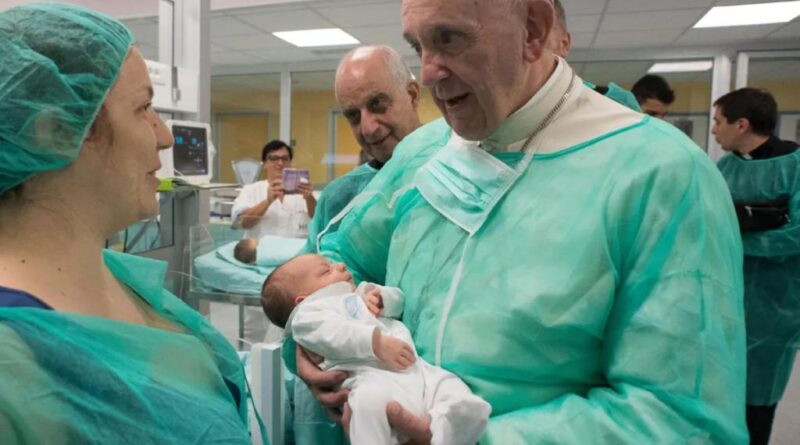Four Key Images That Illustrate Pope Francis’ Legacy Through His Teachings

Inscribed on the ceiling of St. Peter’s Basilica in Rome are the words spoken by Jesus Christ to the apostle Peter on the eve of his crucifixion: “I have prayed for you, that your faith may not fail,” followed by a call for Peter to “strengthen your brethren.”
This verse encapsulates the role of each man chosen to be St. Peter’s successor, most recently exemplified by Pope Francis, who passed away on Monday at 88 years old.
Despite the grandeur that often surrounds the papacy, it is a position of humility. The pope serves as the guardian of a faith fully revealed by Christ and is, by divine decree, forbidden from teaching anything contrary to it.
When he teaches, it is to highlight and clarify the aspects of faith that he believes the Church and the world need to hear.
During his 12 years in service, Pope Francis has brought a unique style to his teachings, differing from his predecessor, Pope Benedict XVI, who was known for his measured and soft-spoken theological approach. Francis, with his roots in the barrios of Buenos Aires, has a gift for impactful and memorable phrases.
Popes are not infallible in every aspect, so only time—and ultimately God—can determine their legacy. However, here are four impactful images from Pope Francis’s teachings that have greatly “strengthened” me, which I hope he will be remembered by.
The smell of the sheep
In a speech shortly after his election, where I was present as a young seminarian, Francis referenced the Biblical metaphor of a priest as a shepherd, urging us to be near our congregations to the point that we take on “the smell of the sheep.”
However, it’s not just any sheep smell. Francis made this remark on Holy Thursday during the Mass of the oils, blessed for priests to use throughout the year, particularly to anoint the sick and baptize children. Thus, “the smell of the sheep” symbolizes the “odor of Christ.” Through our dedicated ministry, Francis emphasized, Christ’s presence should manifest in our own lives.
The field hospital
Among the various metaphors found in Scripture for the Church, Francis particularly embraced the image of a hospital: a place for rest and healing, with an intriguing twist.
Due to the urgency of its mission, he likened the Church to a field hospital following a battle. Every person that the Church encounters bears deep wounds from sin, and the treatment of these wounds can influence their eternal fate. A field hospital focuses on the larger picture: God’s transformative mercy.
This metaphor has limitations. Unlike a field hospital, the Church is not a transient entity. It is more than a site of recovery from trauma; it also serves as a venue for joyful communion with God. (After all, nobody truly wishes to stay in a field hospital.) Nevertheless, it effectively warns against a complacent or bureaucratic mentality.
A throwaway culture
Pope Francis was notable for his concern for the environment, particularly regarding the spiritual perils tied to mass consumption. He pointed out that the modern West has devolved into a “throwaway culture,” where items are viewed as disposable. This mentality, when applied to people, leads to the most vulnerable suffering the most, especially the elderly and unborn.
This throwaway culture also skews our self-image during times when we seek forgiveness. Many wonder: if I acknowledge my brokenness, will I be discarded as well?
I have often drawn upon Francis’s imagery when guiding individuals in preparation for Confession. Identifying this spiritual crisis of our age highlights, by contrast, the mercy of God.
The Heart of Jesus
Many are familiar with various depictions of Jesus showcasing his heart visually. Last year, Francis dedicated a significant letter to this powerful symbol within Catholicism, illustrating that Jesus’ “Sacred Heart” perfectly embodies God’s love.
The phrase “God loves you” can feel abstract and odd for some, lacking immediate relevance to one’s life. Yet, Christians believe Jesus is both fully divine and fully human, meaning all his expressions of love carry the creative power of the universe.
And since his true human body was resurrected, that human heart continues to beat with love for every person he created, inviting each of us to unite our hearts with his.
May Pope Francis now experience in Eternal Life the profound love he often spoke of during his time on earth.
Fr. John Wilson is a priest of the Archdiocese of New York, where he has served in various parishes.



